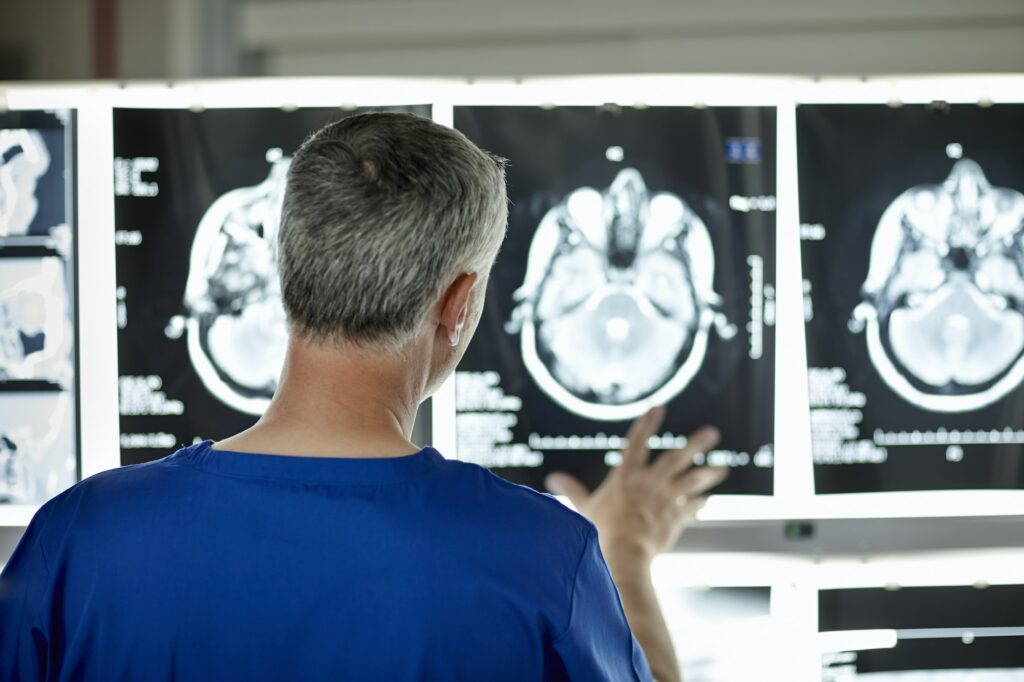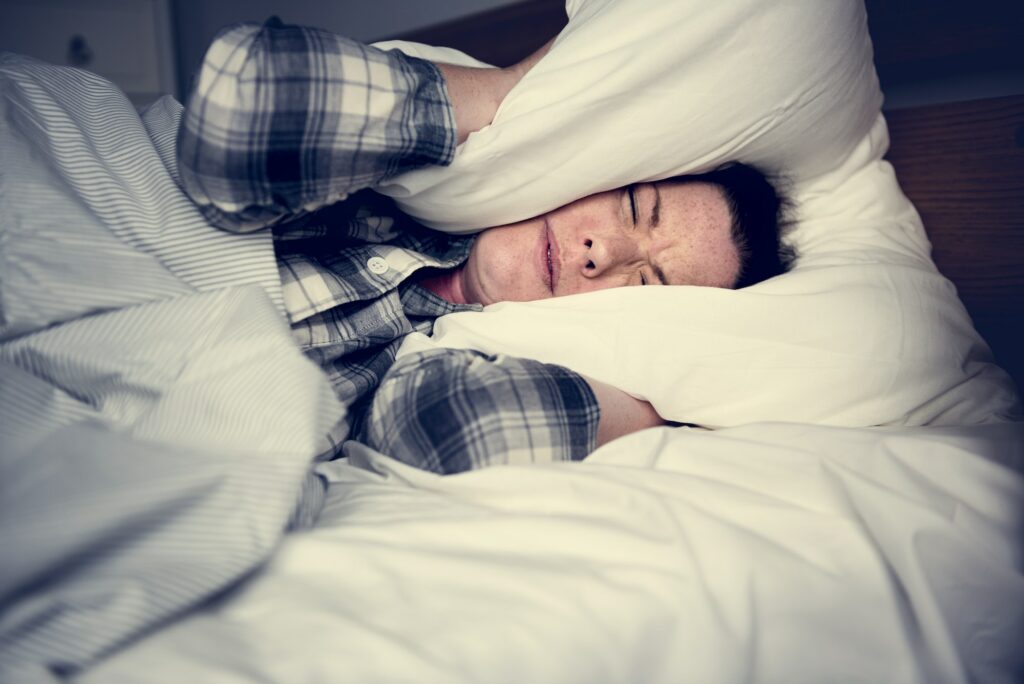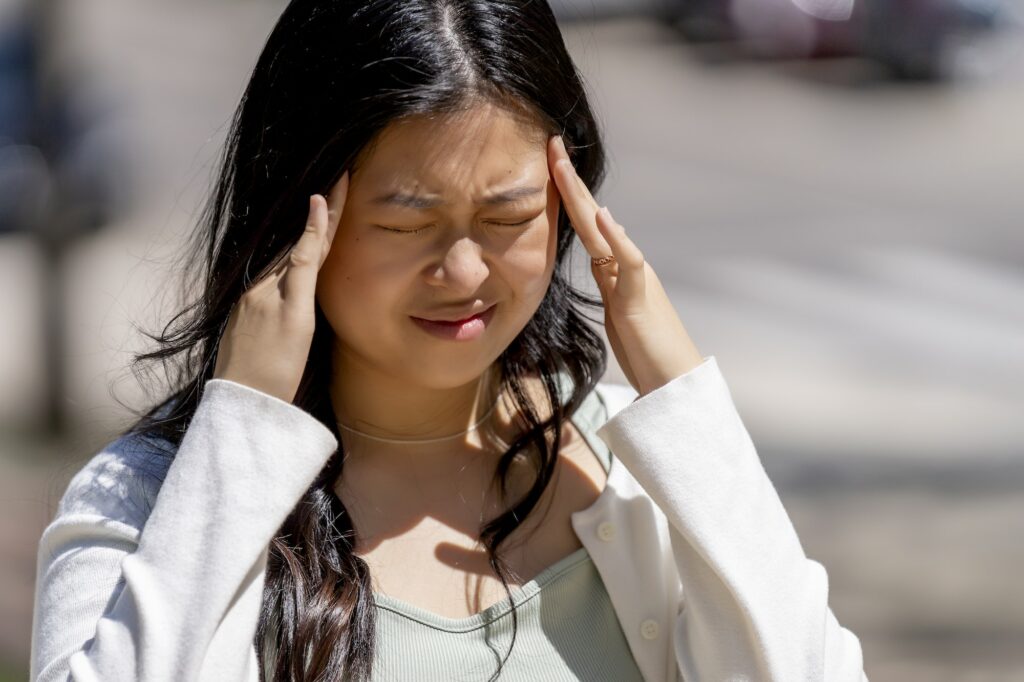Cluster headaches are a form of trigeminal autonomic cephalalgia, characterised by sudden and severe pain attacks on one side of the head, which can last from 15 minutes to three hours.
Unlike other types of headaches, autonomic symptoms like rhinorrhea, conjunctival injection, miosis, ptosis, and eyelid oedema typically accompany cluster headaches. These symptoms are believed to be caused by hypothalamus activation.
Cluster headaches are known for their excruciating pain, often coming on suddenly and without warning. While the pain associated with cluster headaches can be debilitating, several other symptoms accompany these headaches.
The pain associated with a cluster headache is typically focused around one eye, though it can radiate throughout the head and neck. There are two primary types of pain experienced during a cluster headache:

Cluster headaches are also associated with a range of autonomic symptoms caused by the activation of the autonomic nervous system during an attack. These symptoms can include:
Though uncomfortable, these symptoms are generally not harmful, but they can serve as indicators that a cluster headache is imminent, prompting patients to seek treatment.
Next, we’ll explore the possible causes of cluster headaches.
Cluster headaches are believed to be caused by the activation of the hypothalamus, a region in the brain responsible for regulating the body’s internal clock and other autonomic functions. This activation can trigger a series of events that lead to intense pain and other symptoms associated with cluster headaches.
In addition to hypothalamus activation, there are several other factors that can trigger a cluster headache attack. These include a disturbance in the circadian rhythm, which regulates the sleep-wake cycle, as well as certain foods and drinks, such as alcohol, that contain histamine or nitroglycerin.
There is also evidence to suggest that genetics may play a role in the development of cluster headaches. Studies have shown that having a first-degree relative with the condition increases a person’s risk of developing it themselves.

Neuroimaging studies have been used to better understand the pathophysiology of cluster headaches and identify potential treatment targets. For example, brain scans have shown that the trigeminal nerve, which supplies sensation to the face and can be involved in the pain of cluster headaches, is activated during attacks. Parasympathetic activation is also a feature of cluster headaches, and this too has been targeted in treatment.
To develop better treatments for cluster headaches, ongoing research is necessary. Clinical trials are currently investigating both pharmacological and non-pharmacological options for pain relief, as well as potential new ways to target the underlying pathophysiology of the condition.
Cluster headaches are diagnosed through a physical exam and evaluation of symptoms. Doctors may also use brain scans to rule out other conditions and examine the trigeminal nerve to identify potential triggers.
The pathophysiology of cluster headaches is not fully understood, but hypothalamus activation is believed to be significant in triggering attacks. This activation may be related to disruptions in the body’s circadian rhythm, leading to the characteristic pattern of attacks.
In addition to hypothalamus activation, other factors such as alcohol, histamine, and nitroglycerin can trigger cluster headaches. Genetics may also play a role in susceptibility to the condition, and neuroimaging studies have provided insights into potential mechanisms of the disorder.
Cluster headaches are characterized by autonomic symptoms, including rhinorrhea, conjunctival injection, miosis, ptosis, and eyelid edema. These symptoms suggest parasympathetic activation, which can also contribute to sleep disturbances commonly reported by sufferers.

Research is ongoing to better understand the role of parasympathetic activation in cluster headaches and develop strategies to manage the associated symptoms.
Cluster headaches can be incredibly intense and debilitating, but fortunately, a variety of treatment options are available to help manage the condition.
Medications are often the first line of defence for cluster headache treatment. Triptans like sumatriptan can provide relief by mimicking the effects of serotonin in the brain, while verapamil can help prevent attacks by blocking calcium channels. Octreotide, a hormone medication, can also help reduce the frequency and severity of cluster headaches.
Lithium and steroids may also be used in certain cases to prevent or treat cluster headaches. Nerve blocks, typically performed at the base of the skull, can provide temporary relief by numbing the nerves that contribute to cluster headache pain.
Oxygen therapy is a non-invasive treatment option that involves breathing in 100% oxygen through a mask. This can help reduce the duration and intensity of cluster headache attacks. Deep brain stimulation and neuromodulation, which involve using electrical impulses to disrupt pain signals in the brain, may also be effective for some patients.

Sphenopalatine ganglion stimulation is a newer treatment option that involves applying electrical impulses to the nerve cluster located in the back of the nasal cavity. This can help reduce the frequency and severity of cluster headaches.
Along with medical treatments, pain management techniques like biofeedback can effectively reduce cluster headaches impacting on daily life. Patient education is also key in managing the condition, as understanding triggers and treatment options can help improve quality of life and reduce healthcare utilisation.
In conclusion, while cluster headaches can be incredibly painful and disruptive, a variety of treatment options are available to help manage the condition and improve quality of life. Sufferers need to work closely with their healthcare providers to develop a personalised treatment plan that considers their individual needs and circumstances.
Cluster headaches can be incredibly debilitating and can significantly impact a person’s quality of life. As a result, effective pain management strategies are essential for managing the condition. There are a variety of pain management techniques available for cluster headache sufferers, including:
It’s important to note that pain management strategies for cluster headaches are highly individualised, and what works for one person may not be effective for another. Additionally, effective pain management is crucial for the impact of cluster headaches on a person’s quality of life, reducing healthcare utilisation, and improving patient education and understanding of the condition.
Cluster headaches can significantly impact a person’s ability to function and carry out daily activities. In fact, some estimates suggest that people with cluster headaches experience more disability than those with chronic migraines.
Effective pain management strategies can be helpful in reducing the impact of cluster headaches on a person’s quality of life and ability to function. Additionally, working with a healthcare professional to create a comprehensive pain management plan helps ensure that cluster headaches are managed effectively, which can reduce their impact on a person’s day-to-day life.
Cluster headaches can be categorised into two types: episodic and chronic. Episodic cluster headaches are characterised by cycles of frequent attacks followed by periods of remission, while chronic cluster headaches involve daily or near-daily attacks that last for more than a year without remission.

The intensity and duration of attacks may vary between the two types of cluster headaches. Those with episodic headaches typically experience attacks lasting between 15 minutes to 3 hours, while those with chronic headaches can experience attacks lasting more than 3 hours. Additionally, the frequency of attacks may differ, with chronic sufferers experiencing more frequent attacks than those with episodic headaches.
Treatment options may vary based on the type of cluster headaches experienced. For example, preventative medications such as verapamil or lithium may be more effective for chronic headaches. while acute treatments like oxygen therapy or triptans may be more effective for episodic headaches. Individuals need to work closely with their healthcare providers to determine the best course of treatment for their specific type of cluster headache.
While several treatment options are available for cluster headaches, sufferers still need better pain management options. Ongoing clinical trials and research are essential for improving our understanding of this condition and developing new and effective treatments.
Several clinical trials are currently underway to test the effectiveness of new treatments for cluster headaches. These trials typically involve testing new medications or techniques on a group of patients to determine their efficacy and safety. Some recent clinical trials have focused on neuromodulation and sphenopalatine ganglion stimulation as potential treatment options.
Advances in neuroimaging technology have allowed researchers to study the pathophysiology of cluster headaches in greater detail. By studying brain scans and other imaging data, researchers can better understand the mechanisms behind the condition. This information can then be used to develop more targeted and effective treatments.
While several treatments are available for cluster headaches, many sufferers struggle to manage their pain. Future research should focus on developing new pain management techniques and improving the efficacy of current treatments. Additionally, patient education can be key in improving pain management outcomes and quality of life for cluster headache sufferers.
Overall, ongoing research and clinical trials are critical for improving our understanding of cluster headaches and developing better treatments. By working together, researchers, healthcare providers, and patients can help improve pain management and quality of life for those living with this condition.